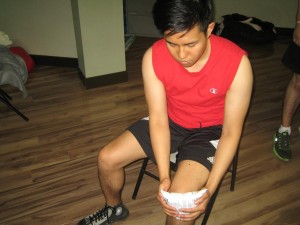A torn meniscus is damage from a tear in the cartilage that is located on top of the tibia and makes the femur glide when the joint of the knee moves. The tears are described by where they are found anatomically in the C-shape and in their appearance such as “bucket handle”, “parrot beak”, transverse and longitudinal tear.
A torn meniscus is considered as common injuries of the knee that occur when an individual performs activities that involves forcefully rotating or twisting the knee, especially when placing the full body weight on it.
Each knee has two menisci which are the C-shaped pieces of cartilage that function like a cushion between the shinbone and the thigh bone. When there is a tear in the meniscus, it causes pain, swelling, stiffness and difficulty in extending the knee fully.
Symptoms
- Stiffness and swelling of the affected area
There is difficulty in straightening or extending fully the knees - A popping sensation can be felt
- There is difficulty in straightening or extending fully the knees
- A sensation that feels like there is a block when moving the knee, as if the knee is locked in place
- Pain especially when rotating or twisting the knee.
Seek medical care if the knee is swelling, pain is severe and the knee could not be moved in the usual manner.
Causes
- Playing sports that requires squatting and twisting the knee and oftentimes, direct contact such as a tackle can cause a torn meniscus.
- Older people are susceptible to degenerative meniscus tears where the cartilage becomes weak and thin over time. Performing awkward twist while getting up from a chair can cause a tear in the meniscus, if the meniscus becomes weak due to normal aging.
- People playing contact sports such as football and activities that involve pivoting such as tennis or basketball can put an individual at high risk for a torn meniscus.
Treatment
- Take plenty of rest, avoid movements or positions that can cause discomfort and consult a doctor if crutches or a brace is required.
- Apply an ice pack or cold compress on the affected knee for at least 10-20 minutes at a time every 1-2 hours for the next 3 days when the person is awake or until the swelling subsides. When applying the ice pack or cold compress, do not forget to apply a thin cloth or towel between the pack and the skin.
- Elevate the affected knee above the level of the heart.
- Take nonsteroidal anti-inflammatory medications such as ibuprofen or naproxen in order to help lessen the swelling and pain.
Seek the help of a physical therapist so that the ideal rehabilitation exercises can be started to help build up the quadriceps and hamstring muscles as well as increase the flexibility.

